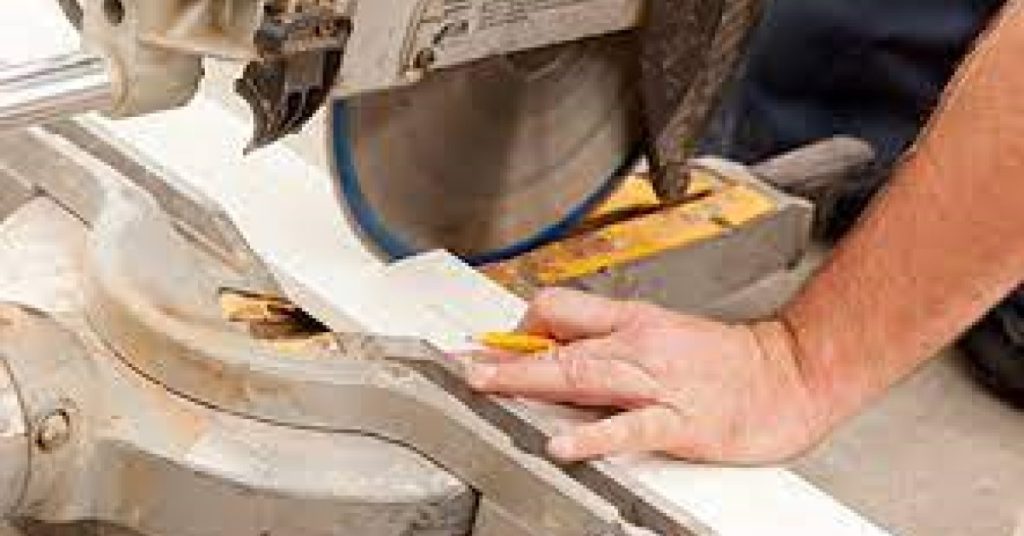I think You’re searching that Which Side of the Line Do You Cut with a Miter Saw?
Well!
You’re on right place because already have worked for you. Miter saws are essential tools for woodworking and DIY enthusiasts, providing precision and accuracy when making angled cuts.
However, understanding which side of the line to cut can be perplexing, especially for beginners. Cutting on the wrong side of the line can result in inaccuracies and ruined projects.
In this comprehensive guide, we’ll explore the key factors that determine which side of the line to cut with a miter saw, ensuring your cuts are precise and your projects turn out flawlessly.
Understanding the Basics of a Miter Saw
Before delving into which side of the line to cut with a miter saw, it’s essential to understand the basic components of this versatile tool.
A miter saw consists of a circular blade mounted on a pivoting arm, which allows it to make accurate crosscuts and miter cuts at various angles. The two primary types of miter cuts are miter cuts and bevel cuts.
Miter Cuts:
These cuts are made by pivoting the saw’s blade to the left or right, creating angled cuts across the width of the workpiece.
Bevel Cuts:
Bevel cuts involve tilting the blade at an angle while keeping the workpiece’s edge against the fence, resulting in an angled cut along the thickness of the material.
To make precise cuts with a miter saw, you’ll often need to mark your workpiece. The accuracy of these marks plays a crucial role in determining which side of the line to cut.
The Importance of Marking
Accurate markings are the foundation of precise cuts with a miter saw. Whether you’re making miter cuts or bevel cuts, marking your workpiece correctly is key. Here are some tips to ensure your markings are accurate:
Use a sharp pencil or marking knife:
Ensure your marking tool is sharp and produces fine, clear lines.
Measure twice, cut once:
Double-check your measurements and angles before marking your workpiece.
Use a combination square:
A combination square helps you create perpendicular lines and precise angles.
Consider the kerf:
The kerf is the width of the saw blade. When marking, take the kerf into account, so your final cut aligns perfectly with your intended line.
Account for blade offset:
Miter saw blades have an offset from the fence. Measure from the blade’s side that is closest to the fence when making your marks.
Which Side of the Line to Cut?
Now, let’s get to the heart of the matter: which side of the line should you cut with a miter saw? The answer depends on the type of cut you’re making and the position of the blade.
- Miter Cuts:
- When making miter cuts, you should cut on the waste side of the line. In other words, the side of the line that you want to keep should be on the side of the blade where the material will be removed.
- For example, if you’re making a 45-degree miter cut, position the saw blade so that it aligns with the waste side of the marking line. This ensures that the final piece retains the precise angle you desire.
- Bevel Cuts:
- When making bevel cuts, it’s essential to cut on the side of the line that represents the final piece’s edge. This means that the waste side of the line should be on the opposite side of the blade.
- For instance, if you’re making a bevel cut at a 30-degree angle, position the saw blade so that it aligns with the edge of the marking line that you intend to keep. This ensures that your workpiece maintains the correct bevel angle.
Conclusion – Which Side of the Line Do You Cut with a Miter Saw?
Mastering the art of cutting with a miter saw involves understanding the nuances of marking and knowing which side of the line to cut for different types of cuts.
While this guide provides essential insights, practice is key to perfecting your miter saw skills. Remember to measure accurately, mark your workpiece clearly, and pay close attention to the blade’s position in relation to your markings.
With time and experience, you’ll become adept at making precise cuts that enhance the quality of your woodworking projects.
Whether you’re creating decorative moldings or constructing furniture, the knowledge of which side of the line to cut with a miter saw is a valuable skill that will serve you well in your woodworking journey.


